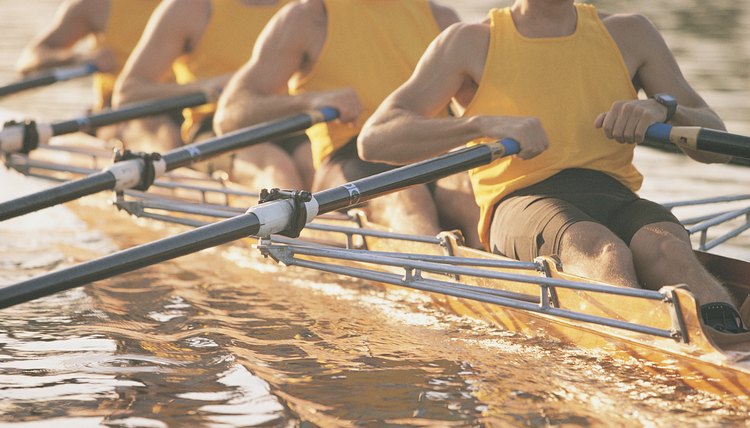Top 5 Best Cardiovascular Sports

Many athletes claim their sport reigns supreme in terms of physical demand. However, to truly assess the cardiovascular benefit of a particular sport, objective data is required. One way to evaluate the cardiovascular benefit of a sport is to determine the maximal oxygen consumption, or VO2 Max, of elite athletes within the sport. VO2 Max refers to the maximum amount of oxygen an individual can process during exercise, and is predominantly determined by the size and strength of the heart and the efficiency of the cardiovascular system. VO2 Max values are presented as the number of liters of oxygen present in an athlete's system per kilogram of body weight.
Cross-Country Skiing
According to data presented in "Essentials of Strength Training and Conditioning," cross-country skiing is the most aerobically challenging sport and places the highest demand on the cardiovascular system. Elite cross-country skiers tend to have VO2 Max estimates upward of 70, higher than any other major sport. Cross-country skiing is essentially long distance running on skis, but also includes a significant upper body strength component.
Mid to Long Distance Running
Elite runners who specialize in middle to long distances exhibit VO2 Max estimates of 60 and greater. Interestingly, middle distance runners tend to have slightly higher values than long- istance runners because of the higher intensities of their events. High-intensity training has been shown to produce greater cardiovascular adaptations than long slow distance training. However, sprinting is not very taxing on the cardiovascular system because short distances are fueled anaerobically, or without use of oxygen.
Cycling
Lance Armstrong should be proud to know that cycling is also among the most beneficial sports to the cardiovascular system, ranking at No. 3. Elite cyclists continually test in the 63 to 69 VO2 Max range, with males testing slightly higher than females. Cyclists likely test lower than runners because the sport targets primarily the musculature of the legs, leaving the torso and arms relatively fixed. The cardiovascular system does not need to work as hard to supply blood and oxygen to muscles in just half the body.
Rowing
Next on the list, according to "Essentials of Strength Training and Conditioning," is rowing. This formerly low key sport is making its way into college athletic programs around the country, and most gyms now provide rowing ergometers for use. Rowing is a total-body cardiovascular workout, and elite rowers often have VO2 Max values in the high 50s and low 60s.
Racewalking
In what is now an official sport of the Summer Olympic Games, racewalkers are gaining increasing respect for their physical prowess. Racewalking provides very similar cardiovascular adaptations to running, although the reduced intensity and lesser muscular demand provides for slightly lower VO2 Max values. Elite racewalkers tend to display VO2 Max estimates in the mid- to high 50s.
References
- BrianMac Sports Coach: VO2 Max
- Essentials of Strength Training and Conditioning (3rd Ed.); Thomas R. Baechle and Roger W. Earle
Writer Bio
Graham Ulmer began writing professionally in 2006 and has been published in the "Military Medicine" journal. He is a certified strength-and-conditioning specialist with the National Strength and Conditioning Association. Ulmer holds a Master of Science in exercise science from the University of Idaho and a Bachelor of Science in psychology from Washington State University.
